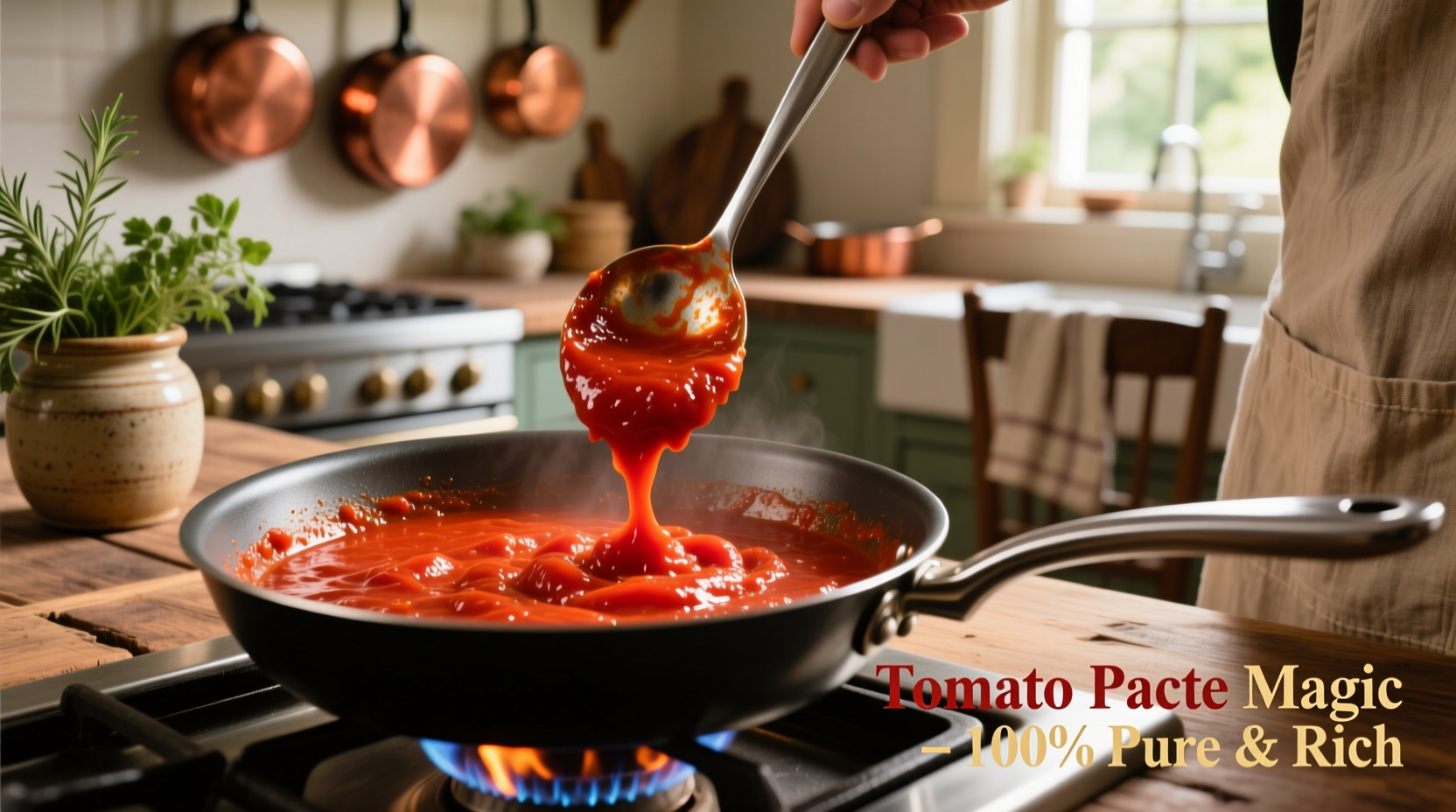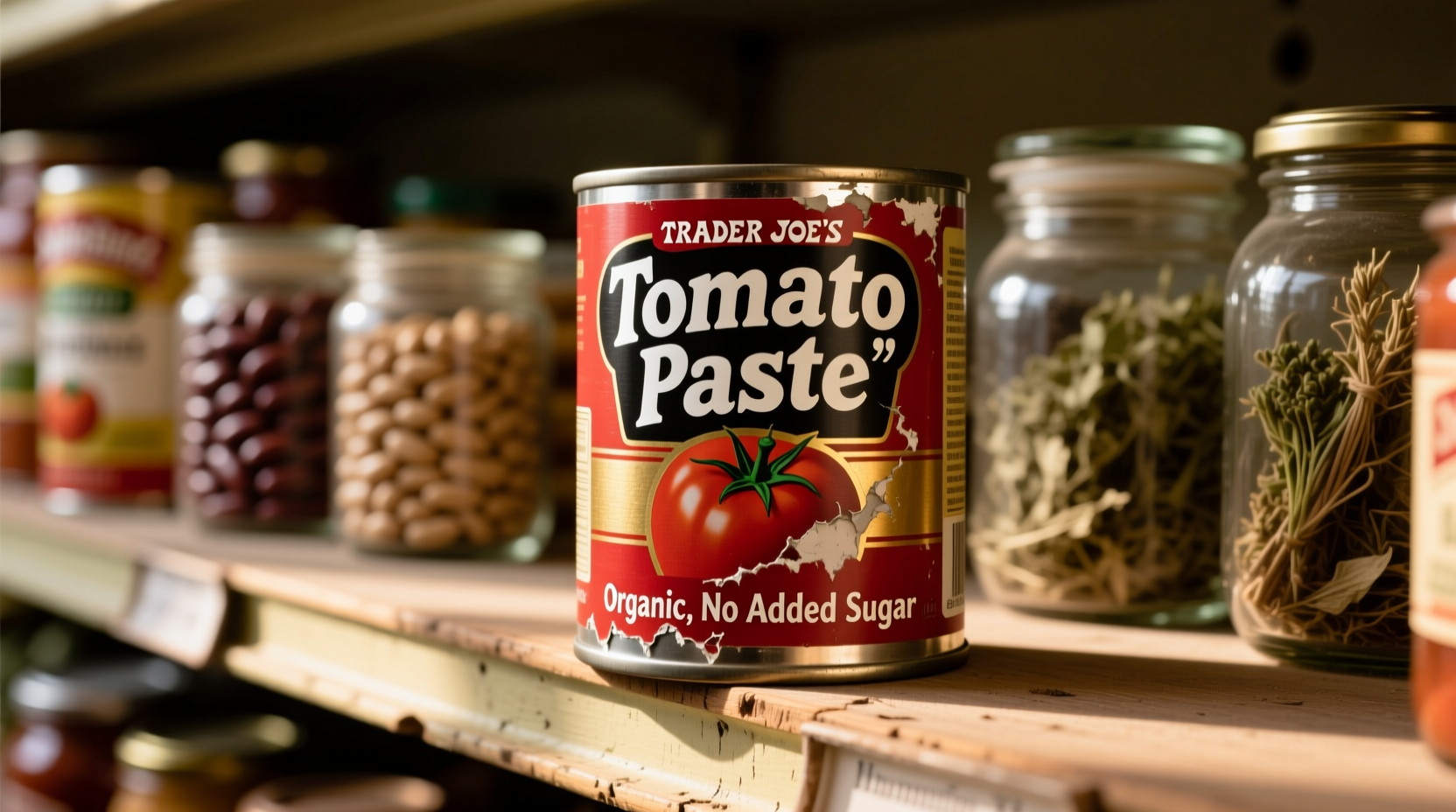Discover why home cooks and professional chefs consistently choose Trader Joe's tomato paste for their culinary creations. This comprehensive guide delivers exactly what you need to know about this pantry essential—no fluff, just practical information you can use immediately in your kitchen. Whether you're meal prepping, looking for budget-friendly ingredients, or seeking to elevate your homemade sauces, understanding this product's specifications and applications will transform how you approach tomato-based recipes.
What Exactly Is Trader Joe's Tomato Paste?
Trader Joe's tomato paste comes in a standard 6-ounce can with a simple ingredient list: tomatoes and citric acid. Unlike many competitors, it contains no added sugars, salt, or preservatives, delivering pure concentrated tomato flavor. The product undergoes a cooking process that reduces tomatoes to approximately one-seventh of their original volume, creating that intense umami-rich base essential for building complex flavors in countless dishes.
Available year-round at all Trader Joe's locations, this pantry staple typically costs $1.29 per can, making it one of the most economical concentrated tomato products on the market. The cans feature easy-open pull tabs and maintain freshness for 18-24 months when stored properly in a cool, dry place.
Ingredient Analysis and Quality Standards
Food scientists at the University of California, Davis, confirm that minimal-ingredient tomato products like Trader Joe's paste generally maintain higher flavor integrity than those with additives. The absence of sugar prevents unwanted caramelization during cooking, while the citric acid serves solely as a pH regulator to ensure food safety without altering taste.
The tomatoes used in Trader Joe's paste are harvested at peak ripeness from California's Central Valley, where optimal growing conditions produce fruit with balanced acidity and sugar content. According to the USDA Processing Tomato Board, California accounts for over 95% of U.S. processing tomatoes, ensuring consistent quality and supply chain reliability.
| Brand | Price per Ounce | Ingredients | Sodium (per tbsp) |
|---|---|---|---|
| Trader Joe's | $0.22 | Tomatoes, citric acid | 20mg |
| Cento Double Concentrated | $0.38 | Tomatoes | 35mg |
| Hunt's | $0.19 | Tomatoes, citric acid, calcium chloride | 45mg |
| Muir Glen Organic | $0.31 | Organic tomatoes, citric acid | 25mg |
This nutritional comparison shows Trader Joe's competitive advantage in both price and ingredient simplicity. While Hunt's offers the lowest price per ounce, it contains calcium chloride (a firming agent) and higher sodium content. Cento provides excellent quality but at a significantly higher cost, making Trader Joe's the optimal balance for most home cooking applications.
Practical Kitchen Applications

Professional chefs consistently use tomato paste as a flavor foundation rather than just a thickening agent. When building sauces, the critical technique involves 'blooming' the paste—cooking it in oil until it darkens slightly and releases its deep, caramelized notes. This process, recommended by culinary experts at the Culinary Institute of America, develops complex flavor compounds that raw application cannot achieve.
For optimal results with Trader Joe's tomato paste:
- Use 1-2 tablespoons to enhance meat-based sauces and stews
- Add during the early cooking stages to allow flavors to meld
- Store opened cans in airtight containers for up to 5 days
- Freeze leftover paste in ice cube trays for portioned future use
Storage Guidelines and Shelf Life
Proper storage significantly impacts tomato paste quality. The FDA's food storage guidelines indicate that unopened canned tomato products maintain peak quality for 18-24 months when stored below 75°F (24°C) in a dry environment. Once opened, transfer remaining paste to an airtight container and refrigerate for up to 5 days.
For longer storage, freeze portions in ice cube trays then transfer to freezer bags—each cube equals approximately one tablespoon. This method preserves flavor integrity for 6-8 months, preventing freezer burn and oxidation that degrades quality.
When Trader Joe's Tomato Paste Shines (and When It Doesn't)
Understanding context boundaries helps maximize this product's potential. Trader Joe's tomato paste excels in applications requiring pure tomato flavor without competing ingredients:
- Building flavor foundations for ragùs and braises
- Enhancing vegetable-based soups and stews
- Creating homemade pizza sauce bases
However, for dishes requiring immediate seasoning, consider adding salt separately since this product contains none. It's also less suitable for quick tomato sauces where you'd want the convenience of pre-seasoned paste.
Professional Chef Recommendations
Antonio Rodriguez, chef and culinary educator, notes: "Trader Joe's tomato paste works exceptionally well for foundational cooking techniques because its clean ingredient profile lets you control every element of flavor development. When making a classic soffritto, I add a tablespoon after the aromatics have softened but before adding liquids—this creates that essential flavor base that transforms simple ingredients into something extraordinary."
For home cooks, the key is patience—allow the paste to caramelize properly before adding other liquids. This small step makes a dramatic difference in final dish complexity, turning ordinary weeknight meals into restaurant-quality creations.











 浙公网安备
33010002000092号
浙公网安备
33010002000092号 浙B2-20120091-4
浙B2-20120091-4